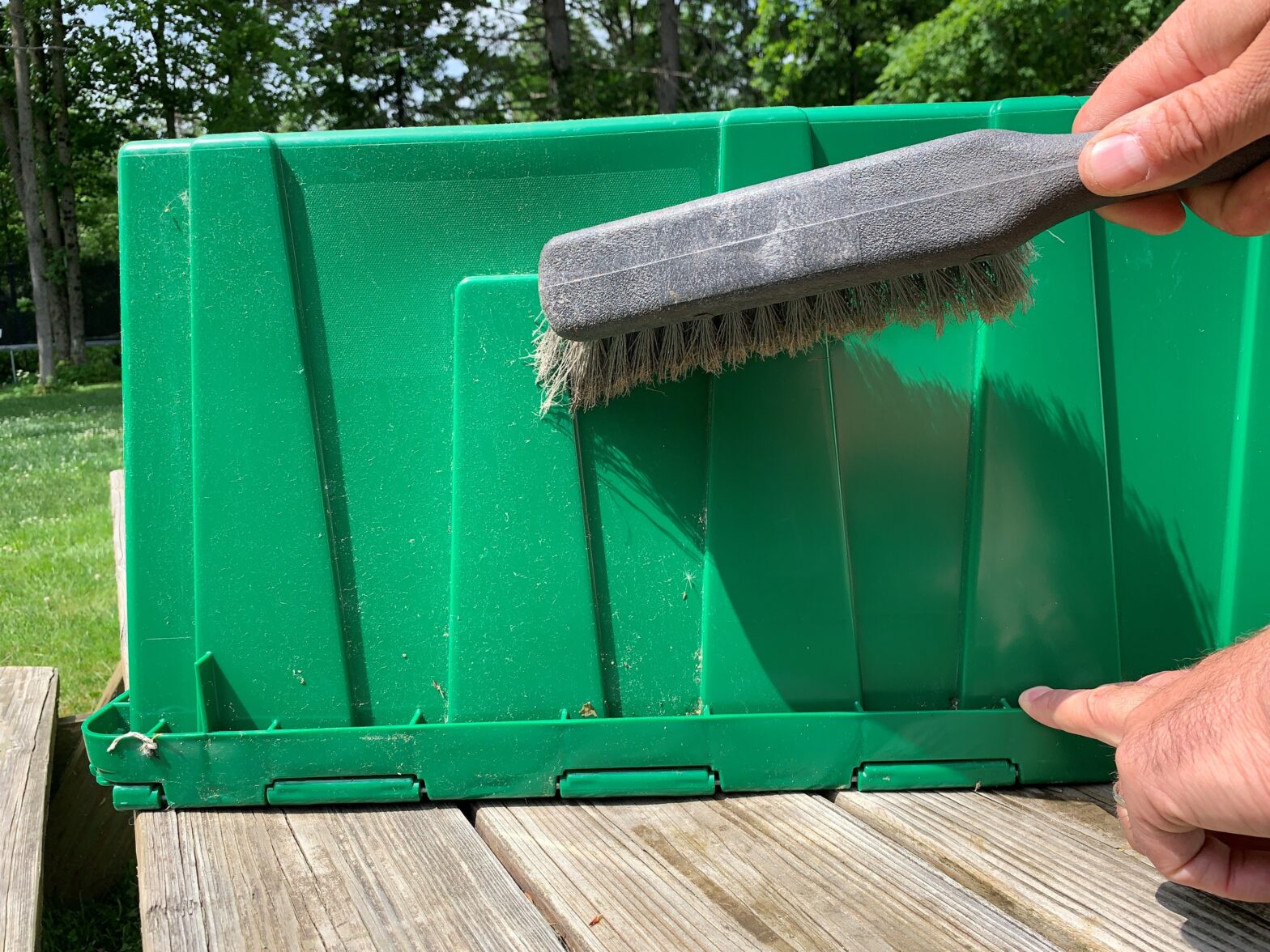Key points:
- Introducing water to a produce line or other food contact surface that is generally dry can introduce new hazards.
- Not all cleaning needs to include water.
- Handling and packing areas that are generally dry, may benefit from “dry” cleaning.
- Brushes, brooms, & vacuums may be used to complete necessary cleaning.
- Waterless cleaning products may be helpful for cleaning dry zones as well.
Introduction
There has been a lot of focus on improving cleaning and sanitization of food contact surfaces. You may feel like it is necessary to soak everything with water, scrub with detergent, and dose with a sanitizer no matter what.
Well, hold on.
There may be situations when a “dry” approach to cleaning and sanitizing makes more sense. After all, many human pathogens depend on water to survive. We also know from the PSA Grower Training that drying is an important step in the cleaning and sanitizing process.1
“(1) You must inspect, maintain, and clean and, when necessary and appropriate, sanitize all food contact surfaces of equipment and tools used in covered activities as frequently as reasonably necessary to protect against contamination of covered produce.
(2) You must maintain and clean all non-food-contact surfaces of equipment and tools subject to this subpart used during harvesting, packing, and holding as frequently as reasonably necessary to protect against contamination of covered produce.2”
The FSMA Produce Safety Rule §112.123
Dry Lines
Some crops are handled, “washed”, and/or stored in dry conditions. Storage onions, for example, are often cured, topped, sorted, cleaned, weighed and bagged without any use of water. Tomatoes are often picked and packed and not washed. Or they may be washed with water and dried, but then sorted or packed on a table that does not have water introduced. When apples and citrus are washed, dried, waxed, graded and bagged, the portions of the process after waxing are generally a dry zone.
Dry Cleaning Methods
Sometimes called “dry lines”, this equipment and these surfaces can generally be cleaned using dry methods. Introducing water to them could actually present more risk than not.
Routine cleaning of these surfaces may involve brushes, brooms, or vacuum cleaning to remove leaves, soil and other visible, bulk solids.
Other liquid-based cleaners such as alcohols can also provide cleaning without introducing liquid water. These cleaners are made to dry quickly and completely. This may still require some disassembly of the line or a specific part of the thing being cleaned for improved access to hard to reach surfaces. A waterless cleaner on a clean rag, or an alcohol-based cleaner and sanitizer wipe could be used for heavily soiled areas or places that need specific attention.
Waterless Cleaners
Some examples of waterless cleaners include:
- Techspray Isopropyl Alcohol Wipes [active ingredient: isopropyl alcohol]
- Purell Foodservice Surface Sanitizing Wipes [active ingredients: ethyl alcohol, Isopropyl alcohol, lauric acid, potassium hydroxide]
A sanitizer labeled for use on food contact surfaces and which includes an air-dry step should be applied to the cleaned surface when sanitization is appropriate.
Air-Dry Sanitizers
Some examples or air-dry sanitizers include:
- WipesPlus Food Contact Surface Wipes [active ingredient: quaternary ammonium chloride]
- Alpet D2 Surface Sanitizing Wipes [active ingredients: isopropyl alcohol and quaternary ammonium chloride]
- Sani Professional Cleaning Wipes [active ingredient: ethylene glycol monohexyl ether]
- Sani Professional No Rinse Sanitizing Wipes [active ingredient: quaternary ammonium chloride]
Less frequent, deep cleans with water and a detergent followed by sanitization and drying steps may also be necessary. These are generally best scheduled outside of the heavy use period, at the beginning and end of the season. This will most likely also involve some disassembly to provide access to hard to reach locations. Be sure to allow time and air flow to provide adequate drying after the deep clean and before reassembly. Drying may not require an active wiping down with a dry rag, but could be accomplished with open air drying.
It may be helpful to develop and document a cleaning schedule that clearly indicates when dry cleaning approaches are used (generally in-season) and when deep cleans including water are done (between seasons of use). The Produce Safety Alliance offers cleaning and sanitizing log templates on their website.
Share This Post
Share this post using this shortlink: http://go.uvm.edu/drycleaning.
References
- Produce Safety Alliance (2019). Produce Safety Alliance Grower Training Course. Version 1.2. Cornell University.
- US FDA. (2015). FSMA Final Produce Safety Rule: Standards for the Growing, Harvesting, Packing, and Holding of Produce for Human Consumption. 21 CFR Parts 11, 16, and 112. Section 112.123. US FDA.
Acknowledgements
This resource was developed by Chris Callahan (UVM Extension), Billy Mitchell (NFU), Phil Tocco (MSU Extension) and Andy Chamberlin (UVM Extension).
This resource was developed as part of the Food Safety Outreach Program under grant number 2020-70020-33003 from the USDA National Institute of Food and Agriculture and also funded, in part, by the USDA Northeast Sustainable Agriculture Research and Education program through award LNE19-375 and by the Food and Drug Administration through The Vermont Agency of Agriculture Food and Markets via the Integrated Extension Educational Programming in Support of the VAAFM Produce Program Grant 02200-FSMA-2018-01. The views expressed in the publication do not necessarily reflect the official policies of the U.S. Department of Agriculture, the U.S. Department of Health and Human Services or the Vermont Agency of Agriculture; nor does any mention of trade names, commercial practices, or organization imply endorsement by the United States Government or the State of Vermont. It is offered without regard to race, color, religion, sex, sexual orientation, gender identity, national origin, disability, protected veteran status, or any other category legally protected by federal or state law.

